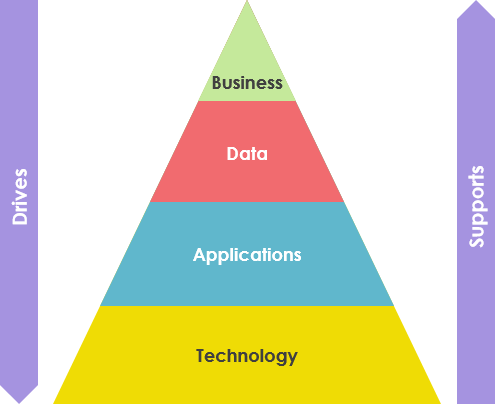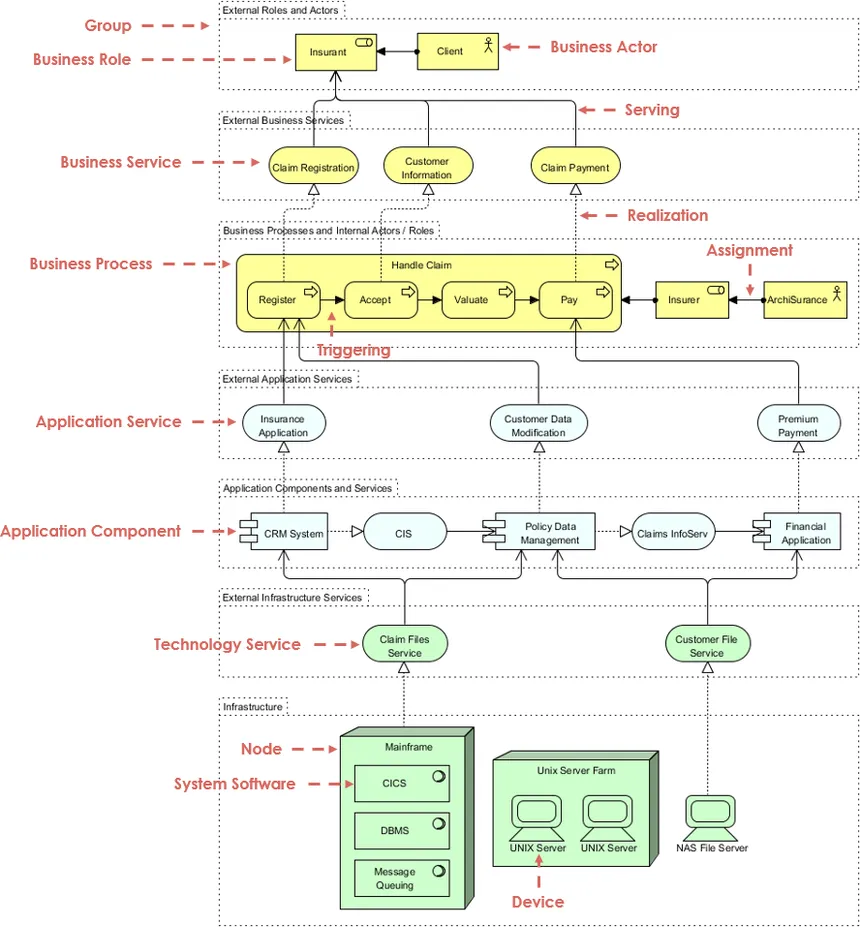Who hasn’t ever felt that they don’t understand what is going on in their own company, or felt that there is a disconnect between what is being said and what is being done, or that there is a lack of transparency and alignment between the different levels and areas of the organization?
I’m sure more than one. Many companies suffer from a lack of a clear and shared vision of their current situation and strategic direction. This can lead to a loss of efficiency, competitiveness and innovation due to sub-optimal decisions for the organization, as well as low employee and customer satisfaction and engagement.

Morpheus and all enterprise achitects
To avoid this scenario, it is not only necessary to know where the company wants to go (strategy) but also to know the truth of what is currently happening in the company in order to reach the ideal state envisioned. By means of a complete (with transparent information from all areas of the company) and solid (coherent and real) enterprise architecture, we can help us in both tasks.
We can say that enterprise architecture is the set of principles, models, standards and tools that describe and guide the structure, operation, behavior and evolution of an organization. Enterprise architecture provides a comprehensive and holistic view of the company, from its objectives and values, to its processes, systems, resources and capabilities.
Enterprise architecture helps us to know the truth about what is happening in the company, and also to know the path to use in the strategy. By having a clear and shared vision of the current situation, we can identify key aspects of the organization such as the way of working or the value streams and thus focus the effort on key points for the organization.
For example, we can define objectives and ensure that they are aligned with each other (not having two units rowing in opposite directions) and with the organization’s strategy. When defining initiatives, ensure that they have the desired impact on the desired points. Without forgetting the indicators that allow us to know if we are getting closer to the desired vision. And this is just one example of how enterprise architecture can help us to know the truth of the company, but there are countless others.
Enterprise architecture is like a mirror that reflects the reality of the organization, without embellishment or deception. It is like the child in Hans Christian Andersen’s famous fairy tale, “The Emperor’s New Clothes,” who tells the truth about the king who is naked, while everyone else pretends to see a wonderful suit.

That’s why enterprise architecture is so important. But even more so in organizations that want to address transformation processes of any nature, as it helps us to design, plan, execute and control changes, ensuring consistency, effectiveness and efficiency of actions and results.
For the enterprise architecture to fulfill its function, it must be based on appropriate processes and measurements. Processes are the activities that are performed to achieve the organization’s objectives, and measurements are the data that are collected to evaluate the performance of the processes. This way we can see if we are approaching the envisioned ideal state or if some initiative needs to be adjusted.
Processes and measurements are essential to ensure the quality, continuous improvement and innovation of the company. Without them, the enterprise architecture would be a mere declaration of intent, with no evidence or monitoring of compliance. In order to deliver the truth, you must look at what is happening and understand why it is happening.
What is enterprise architecture?
Enterprise architecture aims to facilitate the alignment between the company’s strategy, processes, systems, resources and capabilities, in order to improve its efficiency, competitiveness and innovation. But this encompasses a broad spectrum of actions and knowledge of the company.

Thus, enterprise architecture can be described in different ways, depending on the points of view taken for its analysis. One widespread way of describing it is by decomposing it into four main domains:
- The business domain, which defines the organization’s objectives, values, rules and roles, as well as the processes and activities performed to achieve them.
- The information domain, which defines the data that are generated, stored, processed and shared in the organization, as well as their structure, quality and security.
- The application domain, which defines the systems and applications that support the organization’s processes and activities, as well as their functionality, interoperability and architecture.
- The technology domain, which defines the resources and infrastructures that enable the operation of the organization’s systems and applications, as well as their performance, scalability and availability.
The domains are related, starting from the business domain and ending at the technology domain, with the lower domains building on the higher ones. If I don’t understand how my business operates, I won’t know what information I should be dealing with, and therefore won’t know which applications and technology are best. Focusing only on the application and technology domains is like packing your suitcase without knowing where you are going, what you are going to do, or for how long. Maybe you’ll get it right, but it’s not likely.
The enterprise architecture is managed through an iterative lifecycle, comprising the phases of defining, designing, planning, executing and controlling the organization’s transformation, in accordance with its vision and strategy. Through the various iterations, we can learn from experience and adapt tactics (and even strategy) to the change. Throughout the process, different types of views are generated that show the elements and relationships of each domain, as well as the dependencies and impacts between them. All this to obtain the current picture of the company, the desired picture and the intermediate steps to get there, being aware of the consequences of each step (informed decisions).

Undoubtedly we can say that enterprise architecture is a fundamental tool to know the reality of the company and to know the path to use in the strategy. Without it, we run the risk of losing the direction and sense of our organization; the risk of living in an illusion, like the naked emperor.
I had not heard of emperor story. I like to apply it to more cases
Your blog has really piqued my interest on this topic.